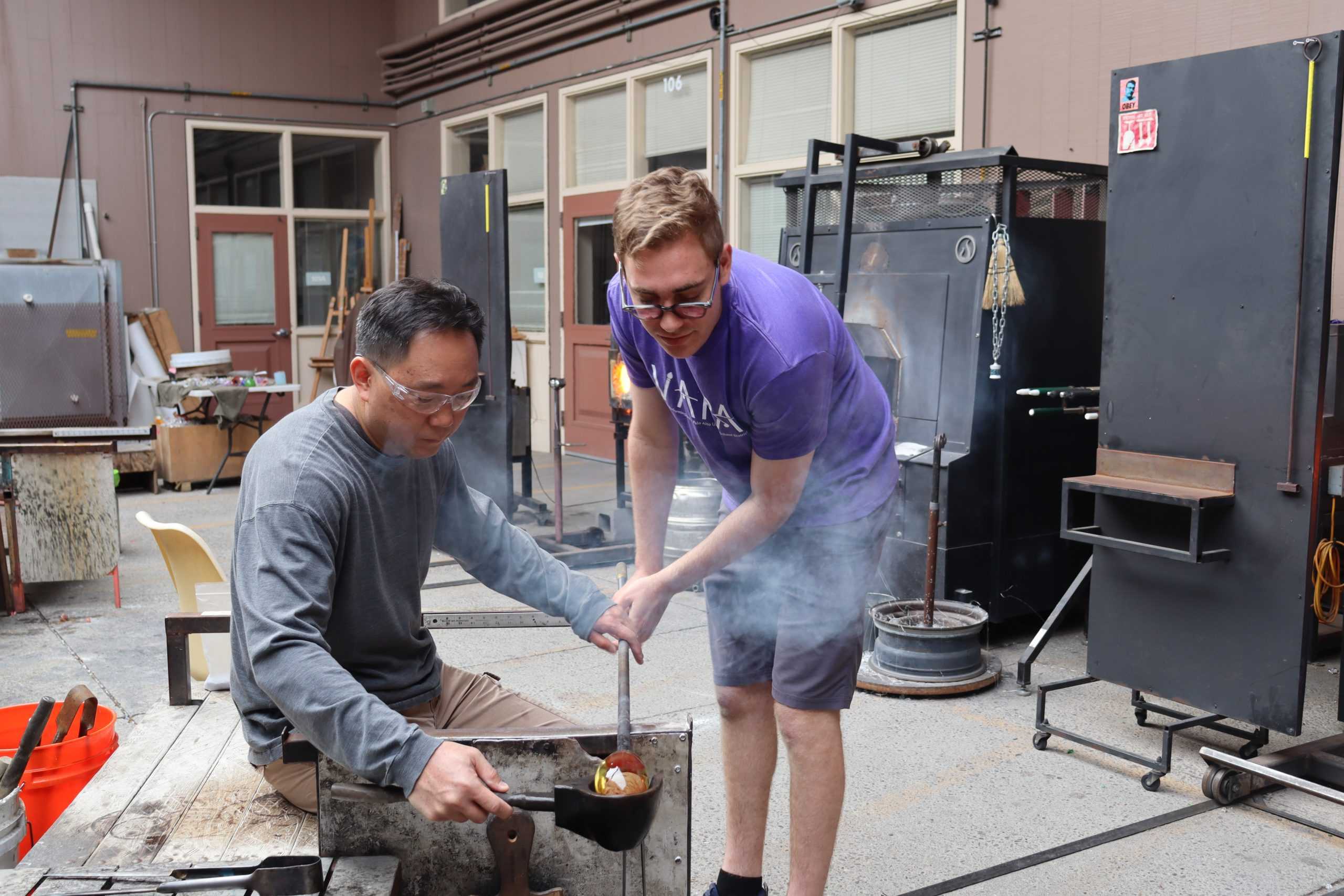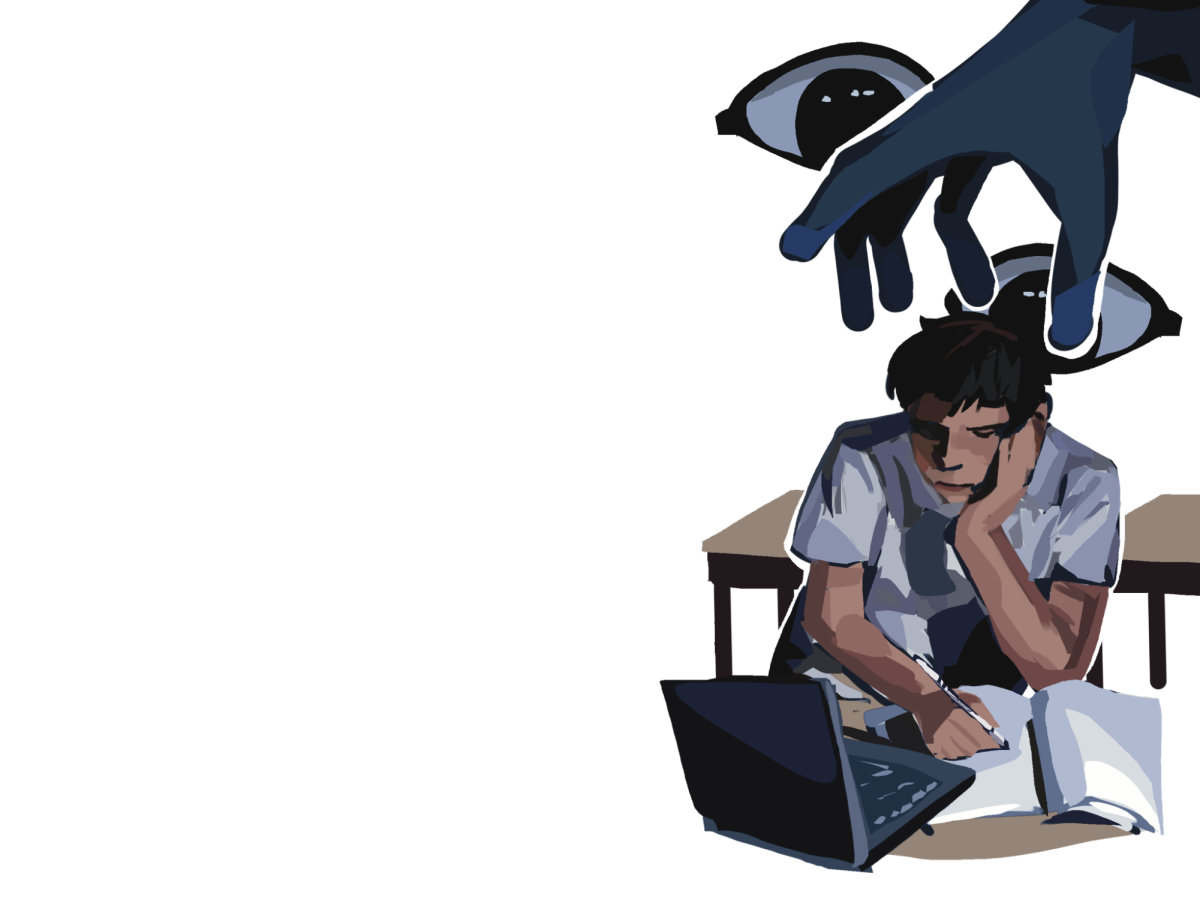As enrollment in glassblowing and ceramics classes has risen, funding from the state and district for these classes has remained flat, meaning teacher Steven Ferrera said he has had to rely more on volunteer help, encourage students to save their materials and have students do fewer projects.
Ferrera said part of the issue his classes face this year, as enrollment has risen from 70 students to 90, is that consumables, such as clay and glaze, have skyrocketed in price due to the pandemic and inflation. But Ferrera said students have found ways to adapt.
“Most of the stuff we use are raw materials, and unfortunately those are now harder to get,” Ferrera said. “It makes it more difficult to do a lot of the cooler advanced stuff.”
Ferrera said the state of California gives him about $40 per student for the entire year, along with financial support from the school in the form of block grants. Block grants are grants given from the federal government to the state and local governments which can then decide where to use the money. This money is used to directly purchase materials.
“(The funding) is never enough,” Ferrera said. “If you look at it just in terms of clay for the entire year, each student would get four bags of clay and one pint of glaze. My Advanced (Ceramics) kids could go through that in the first quarter.”
Ferrera also said he mostly relies on glass sales and workshops to fundraise, including the Fiery Arts program where people pay to create glass pieces with glassblowing instructors.
Jeremy Rosenbaum, a Fiery Arts instructor, said instructional hours are often the first cuts to happen in elective programs.
“(The Fiery Arts program) has to use their funding for both instructional hours and for production and for supplies,” Rosenbaum said. “And the production for the glass sale creates funding for everything else.”
To compensate for the lack of funding, Ferrera said he has altered his lesson plans and encouraged students to save materials. Now, projects are more complicated and don’t require as many materials.
However, junior Ash Batory said the amount of funding has definitely affected the number of projects they would have liked to do. The most recent project, bead making, was canceled due to lack of materials.
“There was no way to replace it without the funds,” Batory said. “We were going to make glass beads, but we need oxygen tanks for that, and it’s around $200 for an oxygen tank.”
Senior Karrie Huang said the lack of funding also limits what colors students can work with for glassblowing.
“Different colors teach you different things. Like green is really soft, or white is really stiff,” Huang said. “For ceramics, we kind of have a limited amount of clay, and I wanted to work with porcelain, but I can’t because there’s not enough.”
Batory said their class is making their next project out of paper instead of other supplies like clay. The paper project, initially planned for later in the year, was moved up so Ferrera could figure out how to make due with the lack of materials.
“This is not what I signed up for,” Batory said. “It’s definitely not the teacher’s fault — he’s doing his best. It’s just the lack of funding.”
Batory said the glass studio manager, Chris Lewellyn, still visits in his free time to help with glassblowing but he’s not getting paid anymore. Also, they said while students are still allowed to blow glass, they are left on their own, and it’s really difficult to learn glassblowing by themselves.
Ferrera said he has been having Advanced Ceramics students help teach beginner students basic glassblowing techniques.
“They totally help me manage the class, and there’s always a group of students that like helping out, which is great,” Ferrera said. “I buy them lunch sometimes and boba.”
Rosenbaum said there is one advanced student helping with instruction in each of the beginner classes, and while they’re good at glassblowing, it’s a lot to ask of them.
“I think you really need instructors there who have many years of experience both for the beginners to get their skills up and going and for the advanced students to learn some things that they’re not able to teach themselves. They need some outside influence for the most part.”
And Batory said mentorship from advanced students isn’t the same as a teacher’s guidance, since the advanced students are also still learning and not ready to teach.
Despite these problems, Ferrera said there’s a strong support structure for the arts from the school, parents, the community, Partners in Education and Career Technical Education.
“It’s nice being in an educated community because parents have an appreciation for the arts and they know how important it is,” Ferrera said. “There’s always ways to find money, you just kind of have to be resourceful.”
















